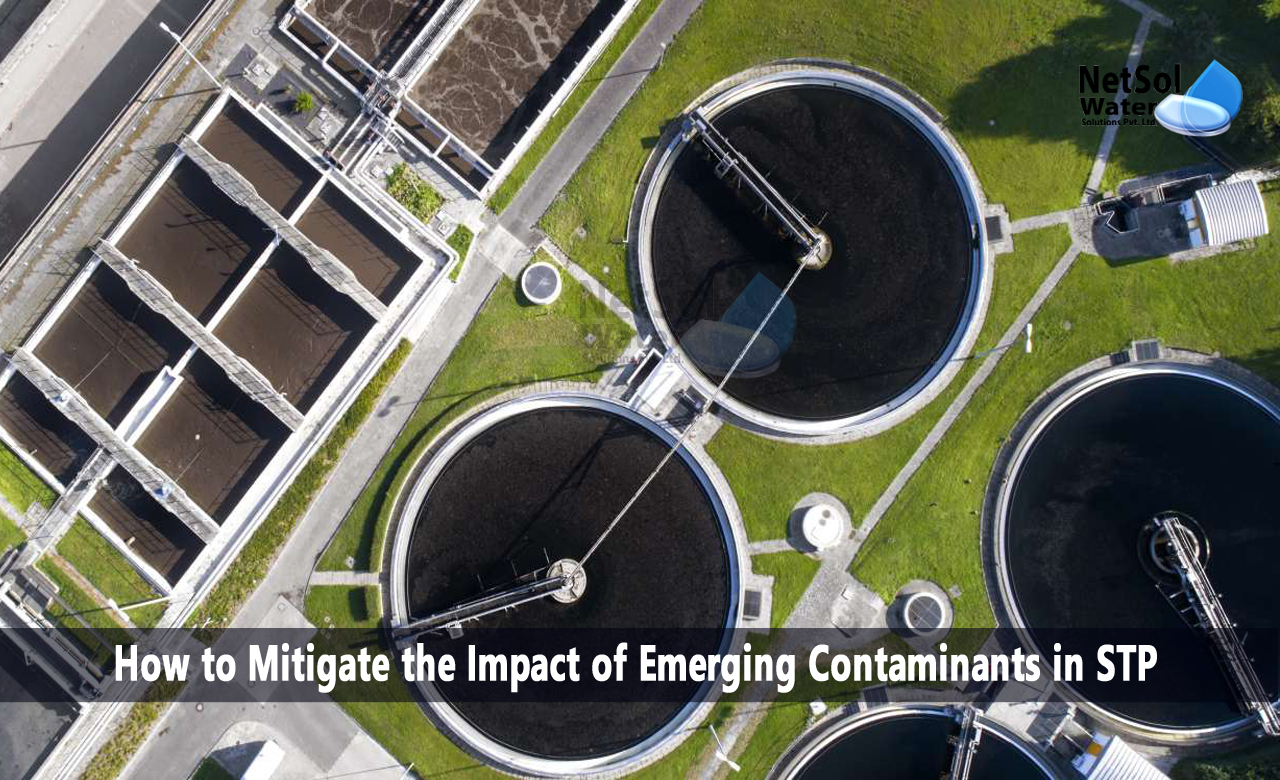How to Mitigate the Impact of Emerging Contaminants in STP?
Sewage treatment plants play a vital role in protecting water resources and public health by treating wastewater before it is discharged into the environment. However, the presence of emerging contaminants in wastewater poses new challenges for water pollution control. Emerging contaminants refer to pollutants that are not traditionally regulated but are increasingly recognized as potential threats to aquatic ecosystems and human health.
In this blog post, we will explore the concept of emerging contaminants and discuss how sewage treatment plants can mitigate their impact through effective water pollution control measures.
Understanding Emerging Contaminants
Emerging Contaminants
Emerging contaminants encompass a wide range of substances, including pharmaceuticals, personal care products, pesticides, industrial chemicals, microplastics, and endocrine-disrupting compounds. These contaminants may enter wastewater through domestic, industrial, and agricultural sources, posing risks to aquatic organisms and potentially entering drinking water sources.
Environmental and Health Concerns
The presence of emerging contaminants in water bodies raises concerns due to their potential adverse effects on aquatic ecosystems, wildlife, and human health. Some emerging contaminants, even at low concentrations, can disrupt the endocrine system, affect reproductive health, accumulate in food chains, or have unknown long-term effects.
Challenges in Addressing Emerging Contaminants in Sewage Treatment
Limited Regulatory Framework
Regulatory frameworks often lag behind scientific advancements, resulting in a lack of specific guidelines or standards for emerging contaminants. This makes it challenging for sewage treatment plants to address these contaminants effectively.
Complex Removal Mechanisms
Emerging contaminants exhibit diverse chemical properties and require specialized treatment methods for effective removal. Traditional treatment processes in sewage treatment plants may not adequately remove certain emerging contaminants, necessitating additional treatment steps or advanced technologies.
Detection and Monitoring
Detecting and monitoring emerging contaminants in wastewater can be complex due to their diverse nature, low concentrations, and the need for specialized analytical methods. Robust monitoring programs are essential to identify the presence and concentration of emerging contaminants and assess their potential risks.
Mitigating the Impact of Emerging Contaminants in Sewage Treatment
Advanced Treatment Technologies
Sewage treatment plants can incorporate advanced treatment technologies to enhance the removal of emerging contaminants. These technologies include:
- Advanced Oxidation Processes (AOPs): AOPs involve the use of powerful oxidants, such as ozone or ultraviolet (UV) radiation, to degrade and remove emerging contaminants that are resistant to conventional treatment methods.
- Activated Carbon Adsorption: Activated carbon has high adsorption capacity and can effectively remove a wide range of emerging contaminants from wastewater. It can be applied in granular or powdered form or as part of advanced filtration systems.
- Membrane Filtration: Membrane filtration processes, including microfiltration (MF), ultrafiltration (UF), nanofiltration (NF), and reverse osmosis (RO), can effectively remove emerging contaminants, including microplastics and some dissolved substances, by physical barrier or adsorption mechanisms.
- Advanced Biological Treatment: Advanced biological treatment processes, such as membrane bioreactors (MBRs) or sequencing batch reactors (SBRs), can enhance the degradation and removal of emerging contaminants through biological degradation and adsorption onto biofilms.
Source Control and Pollution Prevention
Preventing the entry of emerging contaminants into wastewater is crucial. This can be achieved through source control measures, such as promoting proper disposal of pharmaceuticals and hazardous chemicals, implementing agricultural best management practices, and raising awareness about the impacts of personal care products and microplastics on the environment.
Collaboration and Research
Addressing emerging contaminants requires collaboration among sewage treatment plants, regulatory agencies, researchers, and the industry. By sharing knowledge, conducting research on treatment technologies, and developing standardized monitoring protocols, stakeholders can work together to improve water pollution control strategies.
Public Awareness and Education
Raising public awareness about emerging contaminants and their potential impacts is essential. Education campaigns can encourage responsible use and disposal of consumer products, promote the importance of wastewater treatment, and highlight the significance of water conservation and pollution prevention.
Conclusion
Emerging contaminants pose challenges to water pollution control in sewage treatment plants. However, through the adoption of advanced treatment technologies, source control measures, collaboration among stakeholders, and public awareness campaigns, the impact of these contaminants can be mitigated. Sewage treatment plants play a crucial role in safeguarding water resources and protecting public health, and by addressing emerging contaminants, they contribute to the preservation and sustainability of our valuable water ecosystems.
Netsol Water is Greater Noida-based leading water & wastewater treatment plant manufacturer. We are industry's most demanding company based on client review and work quality. We are known as best commercial RO plant manufacturers, industrial RO plant manufacturer, sewage treatment plant manufacturer, Water Softener Plant Manufacturers and effluent treatment plant manufacturers. Apart from this 24x7 customer support is our USP. Call on +91-9650608473, or write us at enquiry@netsolwater.com for any support, inquiry or product-purchase related query.



